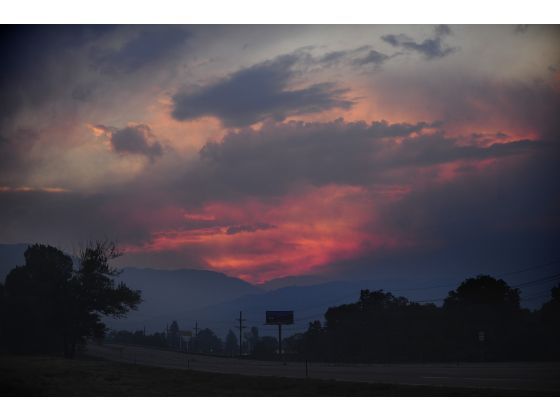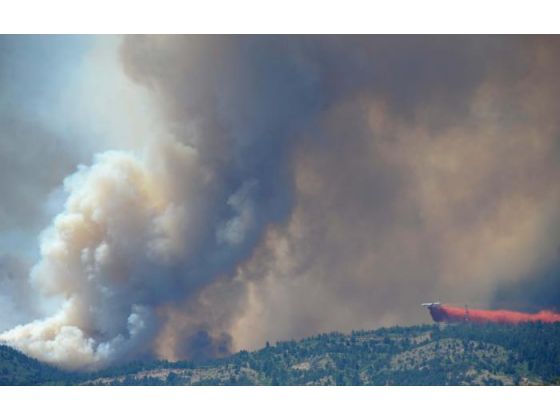
There is an air of unreality here in Washington. It is muggy, people are looking forward to the holiday next week, and the moist cold-and-hot cycle in the weather continues. It may have something to do with the pattern of the jet stream, which is influenced by the Pacific Decadal Oscillation or the effect of el Nino or Nina, I forget which.
What I do know is that the Supremes have made their flight arrangements, and we are going to hear what they think about the provisions of the “Patient Protection and Affordable Care Act”(PPACA) and the Arizona “Support Our Law Enforcement and Safe Neighborhoods Act (SB-1070 as modified by HB-2162).
Both are political dynamite, or better said, torches thrown onto political tinder. The Court will do what the Court will do- it is a co-equal branch of government, regardless of what the Executive Branch mutters about it.
I know how we got to the PPACA, and it was an ugly process that delivered an ugly bill. Something needs to be done about medical care, since left to itself the industry will eat us alive. I don’t know if the current law is the answer, and will wait with you to see about whether it is deemed constitutional or not.
Ditto for Arizona. I don’t blame the state for thinking it is under siege and our Federales are doing nothing to help them out. I also recognize that the Court has the last say on this, and will refrain from comment until there is something to comment about. I deeply regret that we have arrived in a place where the simple exercise of state sovereignty is a matter of constitutional interpretation. We shall see, I guess.
Forgive me if both these significant issues pale in comparison to what is the real and immediate threat to people I know out West. My pal Mike is the commentator of the following report, which touches on issues of life, death, and the Economy Act. I will let his words convey what it is like to live on the shoulder of a mountain and watch the sky glow red with the fury of a wildfire:
“Morning, Vic.
Yesterday was a busy day here in Colorado Springs. The evacuation of the US 24 corridor – from the west side of Ute Pass through the town of Manitou Springs and into the area west of Garden of the Gods – was completed.
Later in the day, they evacuated some areas on the east edge of Woodland Park (the first major town west of Ute Pass on US 24). Firefighting forces were mustered and deployed, and commitments for reinforcements secured. There was no attempt to contain the fire. Rather, fire teams concentrated on protecting threatened homes. Despite south winds that pushed the fire away from populated areas, they probably had their hands full. When I ventured out toward downtown about 3:30 PM, I could see fire lines on the east slopes of the mountains, not far above the expensive suburbs built on high ground there. The fire crews had to work in one-hundred-degree heat.
Here’s a view of the fire from a distance of maybe ten miles. I think the road in the foreground is US 24 as it approaches the east edge of Colorado Springs near Peterson Air Fore Base and the airport.

And here’s the morning report (as of 0700 EST) from KKTV.com, with my comments interspersed:
The latest estimates describe the Waldo Canyon Fire as being 3600 acres and still growing. Containment is still zero percent.
By way of comparison, the High Park Fire west of Fort Collins (north of Denver) is more than 90,000 acres. The problem with the Waldo Canyon Fire is its proximity to densely populated areas.
Although the Waldo Canyon Fire continues to burn, evacuees from the Town of Manitou Springs are being allowed to return home. Those residents were notified around 6:30 PM that the mandatory evacuation would be lifted at 8:00 p.m. Although they are allowed to return home, the Manitou Springs Fire Department says residents should remain on alert for future notifications. Crystal Park will remain evacuated, according to the El Paso County Sheriff’s Office.
“I think this is the greatest natural threat that we’ve seen in this community in the past thirty to forty years,” Sheriff Terry Maketa said Sunday afternoon. At the height of evacuations, approximately 13,542 residences were threatened…
Luckily, no structures have been lost and no injuries have been reported at this time.
The lack of damage to structures is largely due to the fact that the wind has been from the south. That situation is predicted to continue today, but by tomorrow morning the wind is expected to be from the west – pushing the fire toward Colorado Springs. Temperatures will remain around 100 for the next two days. Humidity has been less than 10%.
Smoke columns, which can carry quarter-sized embers with them, remain a concern, as the smoke can drift more than a quarter-mile away from its point of origin, making areas within that range vulnerable to flare-ups.
450 firefighters are aggressively combating the flames from the ground and air with several aircraft. Those ranks quickly grew throughout the day Saturday as resources were shifted off the Springer fire near Lake George, which is now fully contained.
Here’s a photo of an air tanker at work during the early response on Saturday afternoon:

You can see the fire retardant streaming from the plane at the lower right. Air tankers are very useful against fires in rough country that is hard to get to on the ground. The mountains immediately west of Colorado Springs certainly qualify as rough country. There are many ridge lines, very few roads.
The National Interagency Fire Center, which coordinates the response to major fires, contracts for both firefighters and air tankers. To use non-contracted aircraft before contracted resources are committed is a breach of contract. NIFC can and will be sued. It would appear aircraft are fully committed (there are eight fires burning in Colorado and others in New Mexico and Utah). Either that, or some other work-around has been found by USNORTHCOM, because the major source of non-contract air tankers – the US Air Force – will be employed against the Waldo Canyon Fire starting today. There are two C-130s configured as firefighting tankers at Peterson Field. Two more will come in tomorrow. Here’s what they look like:

(C-130 firefighting pallet being loaded on an ANG transport.)
These aircraft are far superior to the elderly tankers that NIFC’s contractors fly. The Air Force has, I think, nine C-130Js configured to carry the firefighting module you see being loaded in the picture above. There is legislation pending to double the military firefighting tanker fleet.
The system for deploying resources in a domestic disaster is local first, then state, then non-DoD federal assets. The Economy Act requires that non-DoD agencies reimburse DoD for the use of military assets – even if, for example, the military aircraft needed to fly anyway. This is a good way to avoid wasting money but a poor way to respond to an emergency. I’ve always believed that available military resources should be committed immediately when there is a natural disaster. Today’s C-130 sorties will be the first of this fire season. All the fires that have occurred before this have been fought without DoD assistance.
“I think we’re very fortunate. We have been able to get resources off the Springer fire to respond to this,” El Paso County Sheriff Terry Maketa said Saturday…
To go back to the DoD piece, there is of course a complete Army Division (4th Mech) of 20,000 strong, just down the mountain from me on Fort Carson. You would think the Waldo Canyon Fire would never lack for firefighting manpower. But again that contracting thing applies, as does the Economy Act. Plus NIFC says it takes two weeks to equip and train a battalion of troops for work on the fire lines. Two hours would seem more reasonable to me, assuming trained firefighters accompany the troops. Equipment would be more of a problem.
Command of the fight against the Waldo Canyon Fire has now transitioned to a Type I incident management team from the Forest Service. Previously, command was shared by several local agencies.
The fire’s cause is currently still unknown.
Given the wind prediction, I think tomorrow will be the day to watch in terms of the fire.
This could go on for weeks…”
Compare and contrast. There is reality, and there is reality. I am glad I am where I am, where the skies do not burn.
Vic
